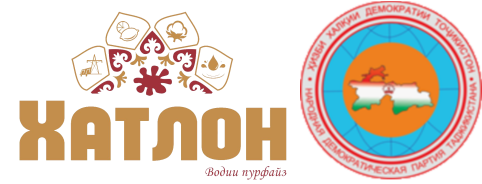
KHATLON REGION OF TAJIKISTAN
Khatlon region (abbreviated Khatlon) – one of the most populated and irrigated areas of Tajikistan is located in the southwestern part of the country with a population of 3.1 million people, representing 35% of the population. Khatlon consolidates the former provinces of Kulob and Kurgan Tepa, which remain topographically separated by a mountain ridge. Accordingly, the new province is also referred to as eastern and western Khatlon, corresponding respectively to its constituent parts, Kulob and KurgonTepa. Occupying an area of 24,800 km2 or 9,600 square miles (constituting 17 percent of Tajikistan’s territory), Khatlon is bounded by Afghanistan on the south and southeast, Uzbekistan on the west, the Districts of Republican Subordination (centered at Dushanbe) on the north, and Badakhshan Province on the northeast. The latter two plus Sughd Province and Khatlon Province constitute the four first-level administrative units of Tajikistan Republic.
Khatlon established on December 2-nd, 1992, and the administrative center of the region is the city of QurgonTeppa (Kurgontepa). The composition of the Khatlon region consists of 4 cities and 21 areas listed below with a description of the territory and the population.
The share of the Tajik people of Khatlon region is equal to almost 80% of the population of the region and then Uzbeks make up a significant proportion of nationality who live mainly western part of the region.
Irrigated land Khatlon region amount to 338 thousand hectares, which equals 45% of the irrigated land in Tajikistan, rain-fed land 2.12 million hectares, gardens 22.5 thousand hectares, of vineyards 8.2 thousand ha., Meadows 1.2 million. m., living 16.8 thousand ha., backyard 86 thousand ha. and 400 hectares of saplings.
Khatlon region is famous for its high quality cotton, early watermelons, melons, onions, a cement plant, the Nurek, Chemistry Works, the Yavan and Sarband, Vakhsh River, seating Chiluchorchashma, Mountain Childuhtaron, Nurek hydroelectric power station, the historic sites as the Castle “Hulbuk” in Vose district and cemetery Hazrati Amirjon.
Добавить комментарий Отменить ответ
Для отправки комментария вам необходимо авторизоваться.
Ҷустуҷӯ
Хабарҳои охирин
- Program of the International Tourism Forum and Exhibition «Welcome to Ancient Khatlon» 20.02.2024
- ФОРУМ ВА НАМОИШГОҲИ БАЙНАЛМИЛАЛИИ САЙЁҲИИ МАРҲАБО БА ХАТЛОНИ БОСТОН TOURISM FORUM AND EXHIBITION WELCOME TO ANCIENT KHATLON 20.02.2024
- Натиҷагирии фаъолияти Кумитаи рушди сайёҳӣ дар соли 2023 ва вазифаҳо барои соли 2024 09.01.2024
- Achievements of the tourism sector of the Khatlon region 18.12.2023
- Мақбараи Мавлоно Қутбиддини Нишопурӣ/Мавзолей Мавлоно Кутбиддина Нишопури/Mausoleum of Mavlono Qutbuddin Nishopuri 04.12.2023
Хазина
- Февраль 2024 (2)
- Январь 2024 (1)
- Декабрь 2023 (2)
- Ноябрь 2023 (5)
- Октябрь 2023 (9)
- Сентябрь 2023 (7)
- Август 2023 (2)
- Июль 2023 (13)
- Май 2023 (5)
- Апрель 2023 (1)
- Март 2023 (30)
- Февраль 2023 (21)
- Январь 2023 (16)
- Декабрь 2022 (8)
- Ноябрь 2022 (7)
- Август 2022 (9)
- Июль 2022 (4)
- Апрель 2021 (11)
- Март 2021 (8)
- Июль 2020 (4)
- Июнь 2020 (6)
- Апрель 2020 (2)
- Март 2020 (2)
- Февраль 2020 (2)
- Январь 2020 (2)
- Октябрь 2019 (3)
- Июль 2019 (3)
- Июнь 2019 (6)
- Май 2019 (3)
